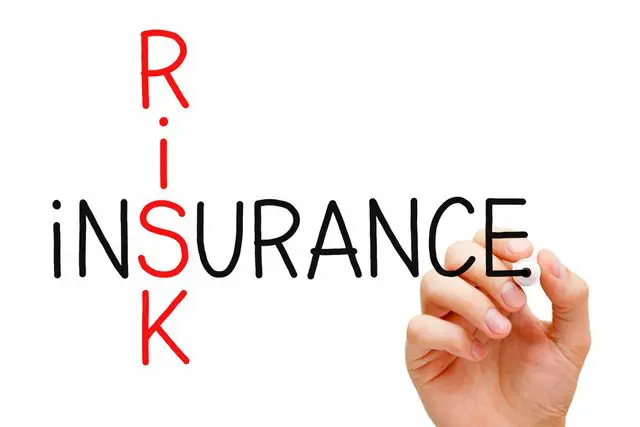Segregation is defined as “…the action or state of setting someone or something apart from other people or things…”. Thanks Google. Another word for it is separation of items at risk or don’t put all your eggs in one basket!
A simple example, from a personnel risk perspective, is to limit the number and rank of staff that fly on the same airplane. If the CEO, CFO, COO and CIO, from a public company, travel on the same plane and it crashes the company that they worked for is at extreme risk of either; failure (bankruptcy), significant reduction in share value, reduced long term strategic prospects/sales or a reduced leadership in the short term. Any one of those four could cause a loss to the company but the aggregate value of the loss of all four would exceed the risk tolerance of most public companies. This is a great example of a risk that cannot be insured and the risk control method is purely policy based with very little incremental cost (each has to get their own cab to the hotel and cannot share the expense) and reduced convenience. There is a loss of potential productivity if all four are seated together and discuss business but we can see that the catastrophic risk to the organization exceeds the incremental increase in potential productivity. A solution may be to allow 2 C-Suite members to fly on the same aircraft. This example does apply to just C-Suite members. Research teams, leadership in some departments, and activity-based risks for all of the staff can create similar personnel risks. Does the reward exceed the black swan risk?
Some examples are not as simple. Consider a large commercial real estate portfolio (200 buildings at $100mm each spread across the ten provinces equally) and the amount of insurance you need to buy. The entire portfolio might have a value of $20bn spread out all across Canada – but you would not buy $20bn of property insurance limits, it is very difficult and expensive, to satisfy your financial risk. Most times a fraction of the total can be purchased and you would be able to sleep well at night. Some would insure for the highest value building, $100mm, but this does not consider the region the buildings are situated in and the risks (fire, flood, earthquake, terrorism, other) they are exposed to. A relatively simple answer would be to insure the value of the whole city, $2bn, but you may still be over insuring the amount (although the whole city scenario is not a bad answer on the surface). The best answer considers the risks to the property (are some targets for political expression), proximity to other owned buildings (two owned buildings next to each other), the risk of the region (flood, quake) from an aggregate perspective (many buildings over a wide area are exposed to flood and earthquake), the owners of the property (political affiliation), the occupancy of the buildings (fireworks factory – don’t say it never happens – google it), the construction, elevation, etc. A full analysis should be completed if you want the best and most cost-effective answer. A thumb nail guess is ok if you are happy with a higher overall limit, more expense and it fits your risk tolerance and appetite.
With these four risk control methods (avoidance, prevention, reduction and separation) you are now exposed to half the strategies available – how will you improve your organizational risk?
Disclaimer: Although the above article references events that have occurred in the past or are new to you, there are current policies/practices that can be learned and applied in todays market. Should you wish to explore any element of this article further, please contact Darius Delon, President of Risk Management 101 at 403-999-2724 for a free initial consultation.

Empowering Business Success
Discover expert insights and strategies to drive your business forward in the dynamic marketplace. Explore our blog for actionable tips and industry trends.
-

Reciprocal Insurance – General Information and Definitions
Introduction Insurance is a way to protect the assets you own from potential financial losses. Usually, this takes the form of…
-

8 Non-Financing Risk Control Methods, Segregation #4
Segregation is defined as “…the action or state of setting someone or something apart from other people or things…”. Thanks Google.…
-

8 Non-Financing Risk Control Methods, #3 Reduction
We know to sparingly avoid risk and how to improve our prevention (frequency) effectiveness but what is reduction (severity) all about…
-

8 Non-Financing Risk Control Methods – Prevention
We know to not use the risk avoidance technique unless we absolutely have to. What does preventing a risk really mean…
-

8 Non-Financing Risk Control Methods – #1 Avoidance
In the dark ages (300 years ago), risk management’s primary tool was insurance – buy enough of it until you feel…
-

Insurance Broker 20% Commission
May 12th, 2020 The insurance hard market has hit commercial insurance policy holders very hard over the last year. Condominium policies…
-

Organization Objectives – During COVID-19
All organizations, world-wide, have been hit with significant disruptions to their business due to the lockdown associated with COVID-19. Some business…
-

Business Continuity in the Age of Pandemic Covid-19
The Emergency Operations Centre has been activated, the Business Continuity Plans have been dusted off and the Crisis Communications Plan has…
-

Providing Risk Management Comment for Media
Resilience Should be the Goal of all Organizations https://www.canadianunderwriter.ca/catastrophes/resilience-should-be-a-goal-of-all-organizations-1004099922/

Leave a Reply